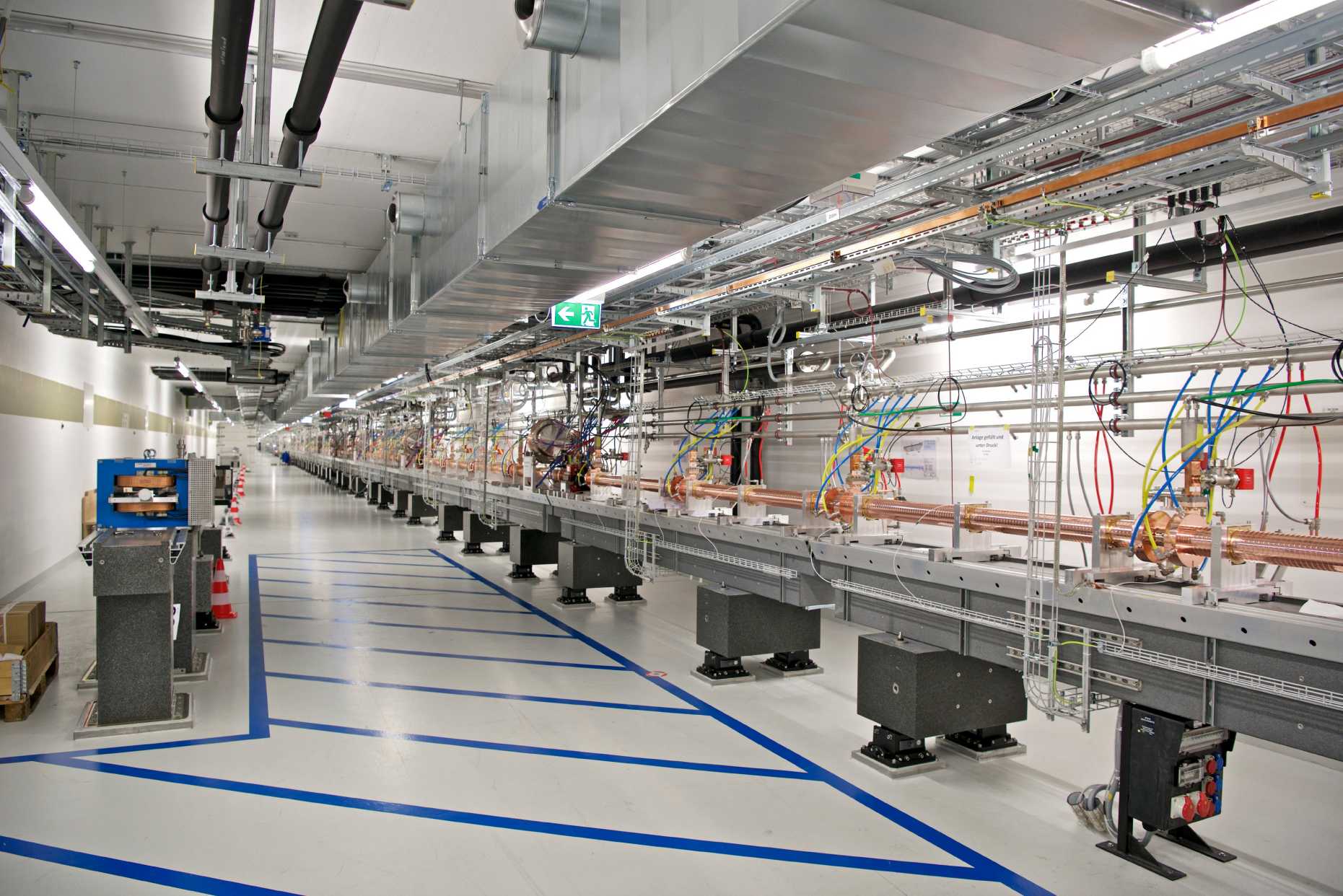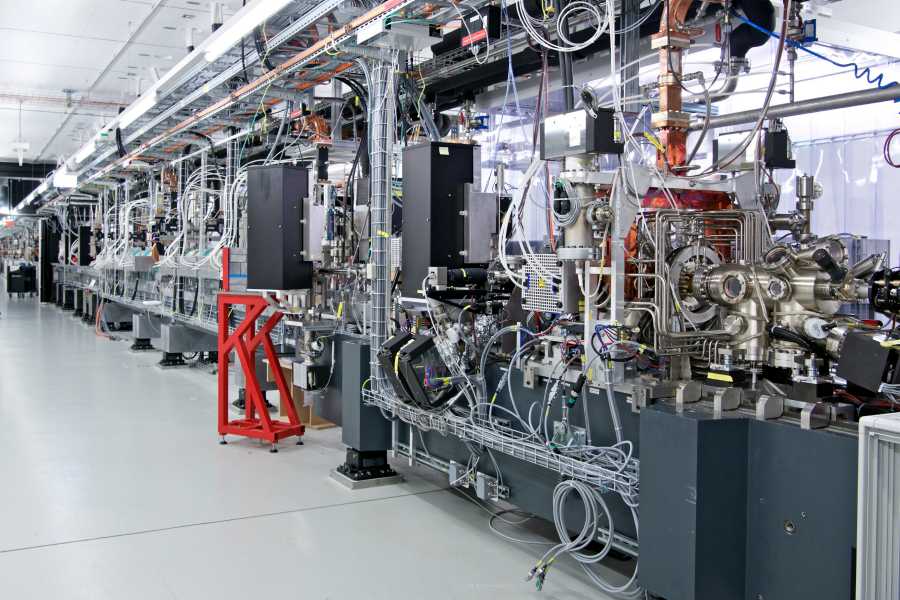Brilliance in cutting-edge research
Switzerland’s credentials as a research location have been enhanced with a major new facility: the SwissFEL X-ray free-electron laser was put into operation at the PSI yesterday. ETH researchers are among those expecting to use the system to gain insights into hitherto hidden processes at the molecular and atomic level.
After three and a half years in construction, the Swiss Free Electron Laser (SwissFEL) was inaugurated at the Paul Scherrer Institute (PSI) yesterday at an event attended by President of the Swiss Confederation Johann Schneider-Ammann. The system is an electron accelerator that produces high-brilliance – i.e. extremely intense – and extremely short flashes of X-ray radiation of laser quality.
Ultra-fast processes as if on film
The SwissFEL is located in a 740-metre tunnel and consists of four sections: in the first section, the injector, the electrons are generated and pre-accelerated. Then, a linear accelerator brings the electrons up to the required energy. In the third section, the electrons are forced on to a serpentine path by undulators; i.e. magnets with alternating polarity. As the electrons traverse this slalom, they produce X-rays, which are routed to the measurement stations in the fourth section for use in experiments by researchers from academia or industry.
The high-brilliance and ultra-short X-ray pulses can be used to make short-term changes in atomic and molecular structures visible. Ultra-fast processes that took place invisibly until now can be followed step-by-step as if on film. This represents a completely new dimension, as Marco Stampanoni, Professor of X-ray Imaging at ETH Zurich, explains.
Until now, Stampanoni and his team have worked chiefly with the Swiss Light Source (SLS) at the PSI: “A single X-ray pulse on the SwissFEL is 10–30 femtoseconds long and corresponds to an exposure time of approximately one second on the SLS. This opens up entirely new possibilities for our research.” In the past, high-resolution analysis of samples was limited by the relatively long exposure time, which led to radiation damage, but the new system is able to move beyond this physical limitation: “With the SwissFEL, so many photons reach the sample in such a short time that they can be analysed with great precision before they are ‘noticed’ and destroyed.”
First pilot projects in 2017
X-ray imaging and microscopy are not the only fields where unresolved questions can now be answered thanks to the SwissFEL. The new system will also be useful in tracking chemical reactions and explaining the exact structure of materials. Laura Heyderman, Professor of Mesoscopic Systems at ETH Zurich, would like to use the SwissFEL to study ultra-fast processes in magnets on the micrometre and nanometre scale and get to the bottom of phenomena that occur during phase transitions. “These findings could help us to develop new magnetic materials for use in more powerful storage media,” the material scientist explains.
Until now, this type of research was possible at only a few facilities worldwide. Thanks to the SwissFEL, the research community now has access to a total of 5,000 extra hours of measurement time each year. The first pilot projects will be conducted by expert users in 2017 in order to test how the individual components work together. ETH has no shortage of ideas on how to put the SwissFEL to use. “For me, the question is where the limits of X-ray imaging lie,” says Stampanoni. “To what extent can the SwissFEL support traditional X-ray techniques? And will it allow us to display living cells in three dimensions?” These are precisely the questions the X-ray specialist wants to study with his team at the new facility.




